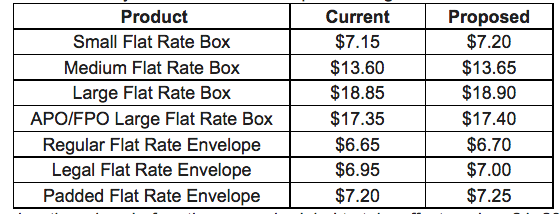

The Postal Service declined to comment for this story. Detractors of the price increases have suggested, however, the reforms Postmaster General Louis DeJoy has proposed-driven by the rate hikes-would bring on and exacerbate that outcome.

In its plan, USPS projected that absent any changes it would lose 37% of non-package mail volume over the next decade. companies away from using USPS for their business, or, in some cases, out of business altogether,” Sackler said. “Rate hikes, paired with decreased service, will drive many U.S.

Mike Plunkett, president of the Association of Postal Commerce, said there is unanimous agreement among his members that the large price hike approach is “the wrong thing to do.” Art Sackler, executive director of the Coalition for a 21st Century Postal Service, a group of large-scale mail users like Amazon and the National Newspaper Association, predicted a hefty increase on Friday would “seriously damage mail” and industries that rely on it. Some of USPS’ biggest customers, however, say that paints too rosy a picture. In a recently released 10-year business plan, postal management said it expected to increase revenue by $35 billion to $52 billion over the next decade directly from rate increases. This year, observers expect the hike could be as high as around 7% for First-Class Mail and higher for other products. The retiree calculation will be phased in over five years and all revenue it generated would have to go toward amortized payments into retiree funds.Ĭonstrained by inflationary caps, USPS has issued modest price increases of around 2% in recent years. The regulator created a new formula that factors in the higher costs of declining “mail density,” as well as a second formula based on the costs of mandated payments for retirees. The new system ties price caps to what PRC identified in November as USPS’ two biggest cost drivers: fewer pieces of mail going to more addresses and mandatory payments the agency must make toward benefits for future retirees. While postal management has expressed confidence that “judicious” use of its new authority will lead to overall revenue growth for the agency that has for years failed to cover its costs, the customers are warning USPS that it will unintentionally accelerate the trend of declining mail volumes. The price hikes had previously been tied to inflation, leaving large-scale mail users fearful of the impact the changes will have on their businesses. USPS’ oversight body, the Postal Regulatory Commission, late last year gave the mailing agency the ability to issue significantly larger rate increases. Postal Service is expected in the coming days to announce its first price increase after receiving new authority to raise rates above inflation, causing some of its biggest customers to sound dire alarms.


 0 kommentar(er)
0 kommentar(er)
